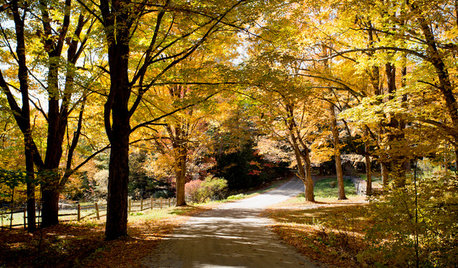Giant Swallowtails in NJ
jerseytom
11 years ago
Related Stories

GARDENING GUIDES6 Plants That Beat Butterfly Bush for the Wildlife Draw
It's invasive, a nonnative and a poor insect magnet. Check out these better alternatives to butterfly bush in the garden
Full Story
GARDENING FOR BUTTERFLIESGarden for Wildlife to Reap Rich Rewards
When you plant with animals and insects in mind, you make gardening easier, the planet healthier and yourself more present
Full Story
GARDENING GUIDESGreat Design Plant: Silphium Perfoliatum Pleases Wildlife
Cup plant provides structure, cover, food and water to help attract and sustain wildlife in the eastern North American garden
Full Story
FURNITUREMust-Know Furniture: The Tulip Chair
An iconic 1950s chair with the simplicity of a flower is still the chair of today
Full Story
GARDENING GUIDESWe Bust 4 More Native Plant Myths
Have you been taken in by these fallacies about gardening with native plants?
Full Story
GARDENING FOR BUTTERFLIESButterfly Gardening: Delight the Eyes With Living Sculptures
Surprise and thrill with a garden that attracts magical winged creatures, bringing color, movement and life
Full Story
GARDENING FOR BUTTERFLIESBe a Butterfly Savior — Garden for the Monarchs
Keep hope, beauty and kindness alive in the landscape by providing a refuge for these threatened enchanters
Full Story
ECLECTIC HOMESHouzz Tour: Rebooting a 1930s Bungalow in 3 Days
A design team mixes old and new to upgrade a computer science teacher's home in a flash
Full Story
FALL GARDENINGHouzz Call: Show Us Your Autumn Views
Share your pictures of fall foliage and decor in the Comments. Your photos may be featured in an upcoming story!
Full Story
GARDENING GUIDESAttract Hummingbirds and Bees With These Beautiful Summer Flowers
Roll out a welcome mat for pollinators to keep your landscape in balance and thriving
Full Story






monkeybelle
KC Clark - Zone 2012-6a OH
Related Professionals
Addison Landscape Contractors · Alamo Landscape Contractors · Marlborough Landscape Contractors · Middle River Landscape Contractors · Southbury Landscape Contractors · Uxbridge Landscape Contractors · Wheat Ridge Landscape Contractors · Whitehall Landscape Contractors · Chicago Ridge Landscape Contractors · Germantown Fence Contractors · Lady Lake Fence Contractors · Lake Forest Fence Contractors · Artesia Window Contractors · The Villages Window Contractors · Discovery Bay Window ContractorsMissSherry
imabirdnut
bot494
Tom
terrene
terrene
Tom